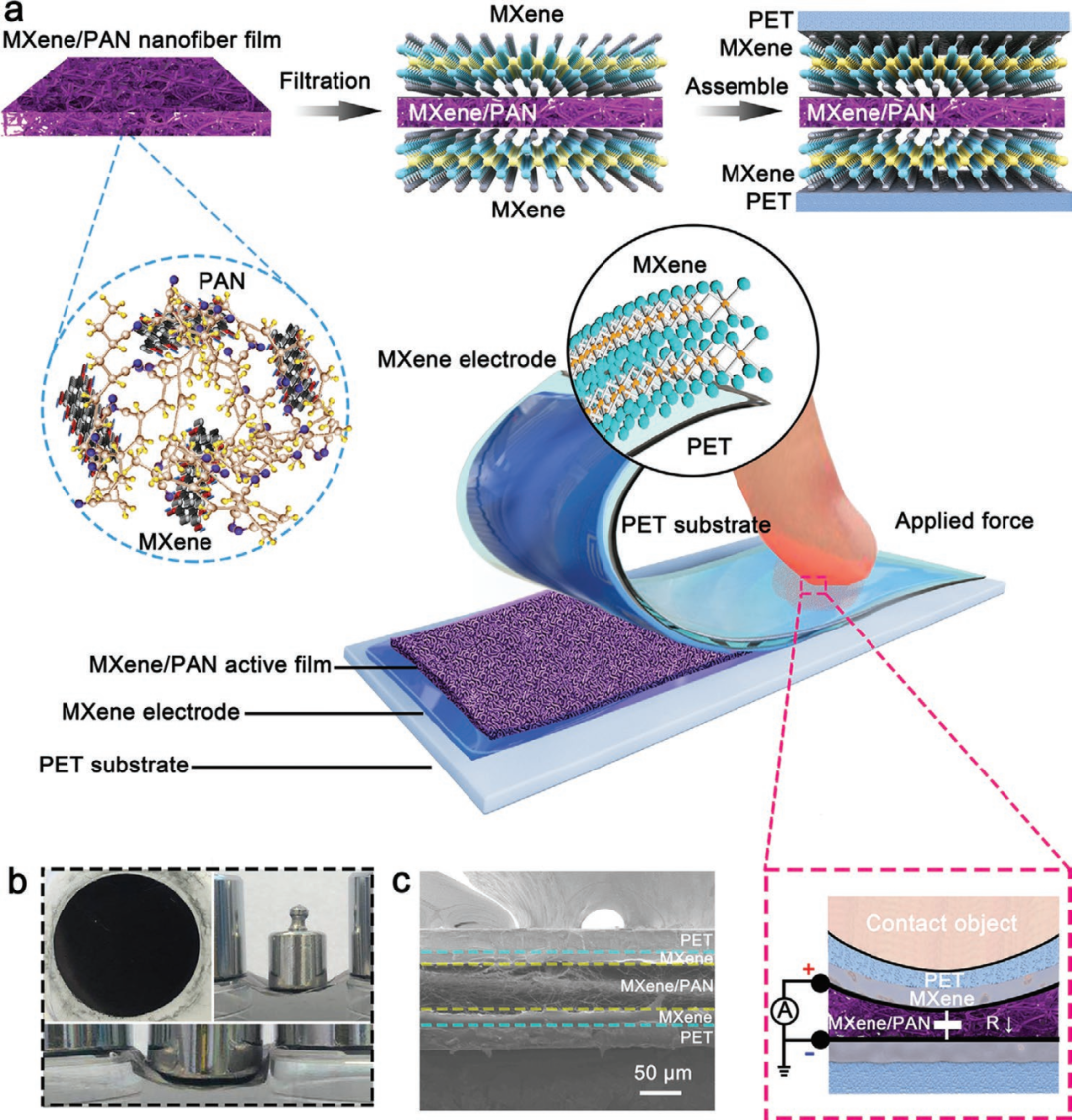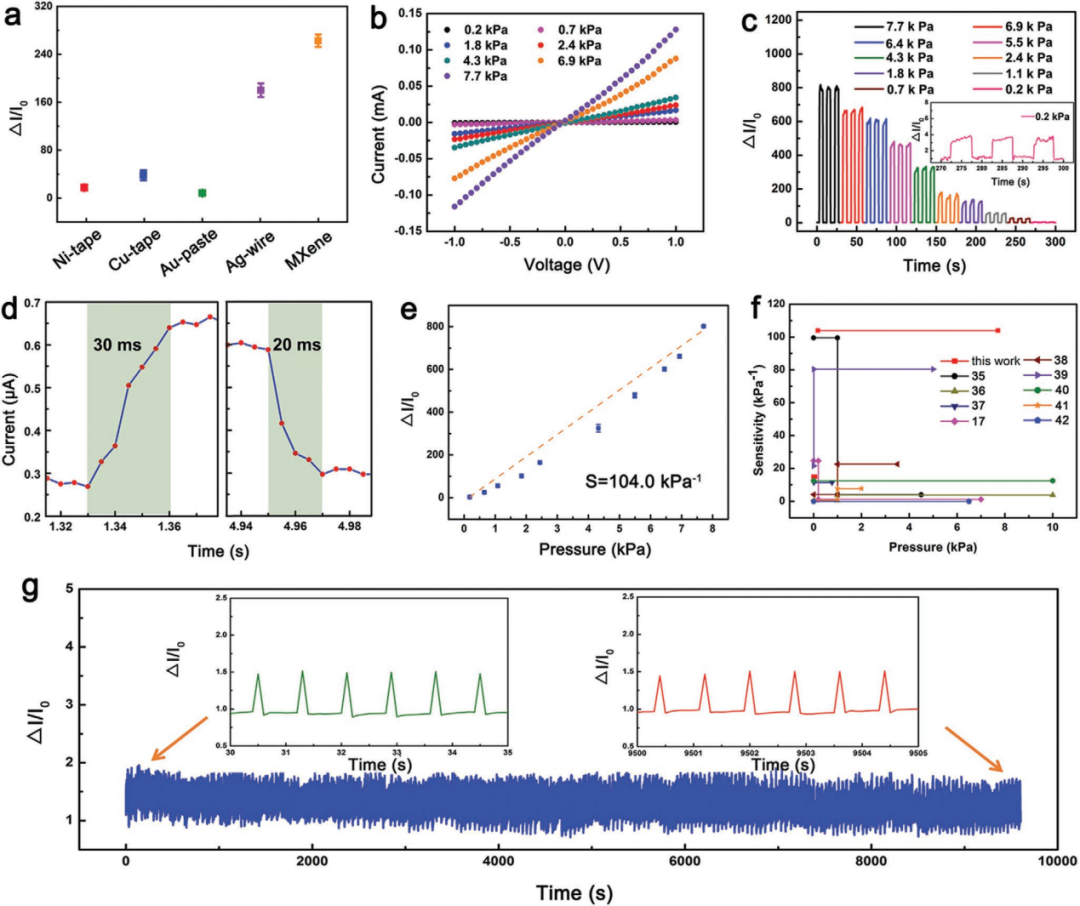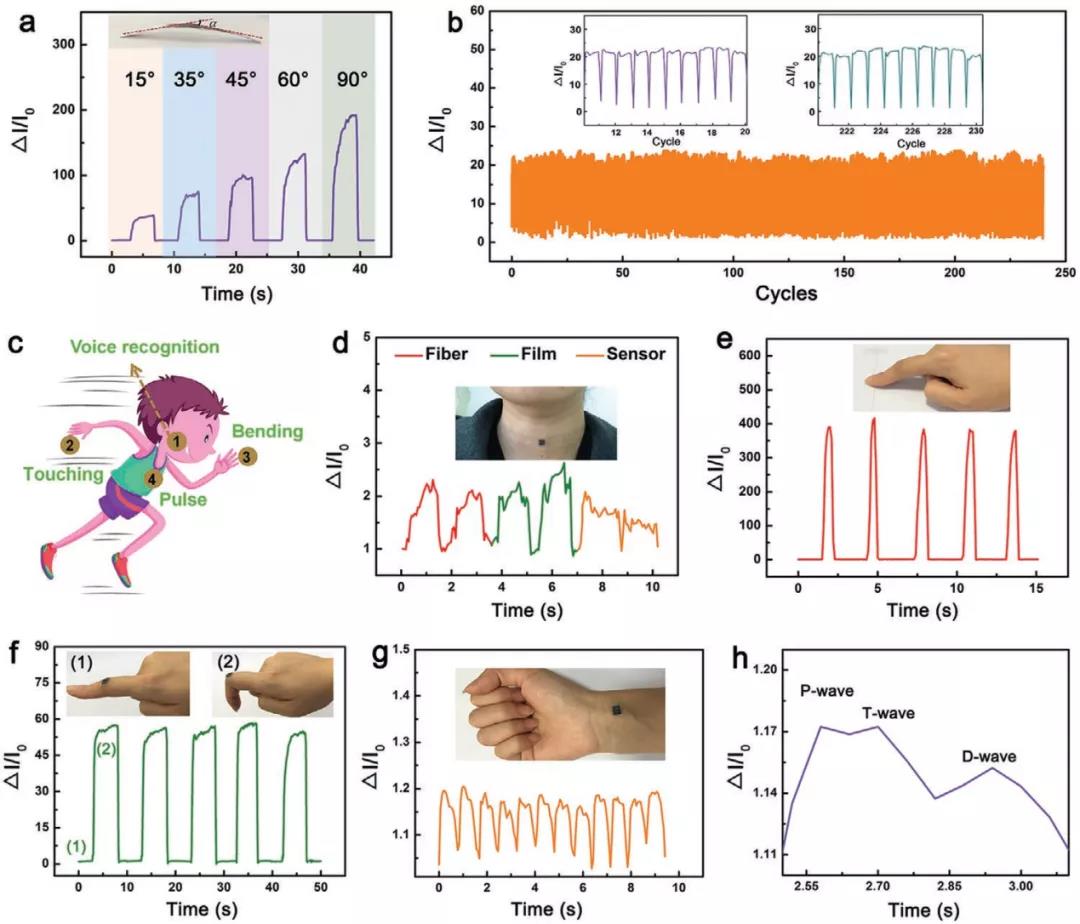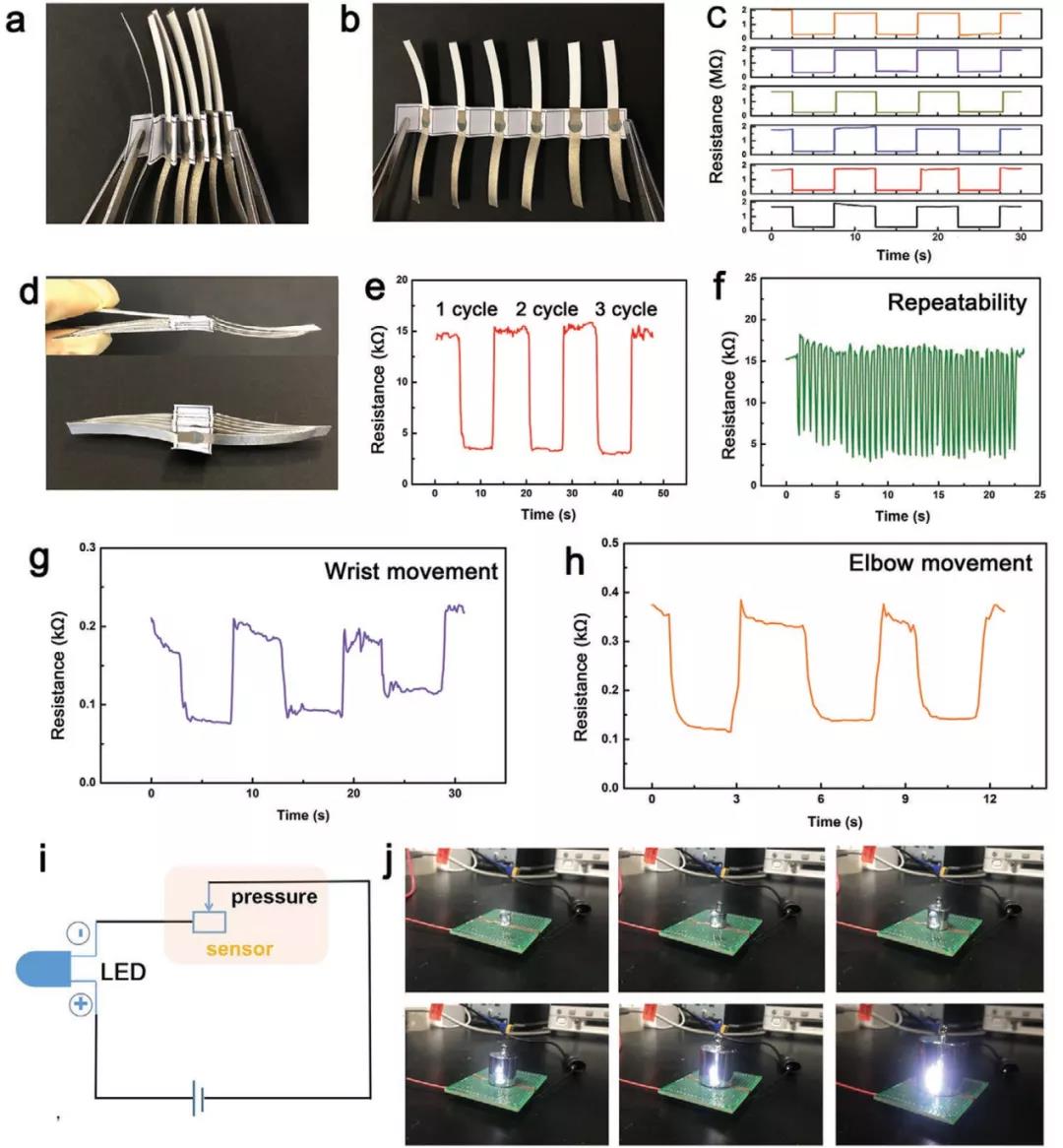Jida/Semiconductor Institute AFM: MXene composite electrode and active layer for high-performance electronic skin
QQ Academic Group: 1092348845
Detailed

1. Article overview
MXene is a new class of 2D transition metal carbides and nitrides. Due to their excellent electrical conductivity, mechanical flexibility and water dispersibility, they have been widely used in flexible electronic products.
The research team of Wei Han from Jilin University and Guozhen Shen and Lili Wang from the Institute of Semiconductors of the Chinese Academy of Sciences realized the application of MXene material in the electrode and active layer of electronic skin.
(1) By using vacuum filtration technology, a few layers of MXene electrodes are integrated into the top and bottom surfaces of the 3D polyacrylonitrile (PAN) network to form a stable electronic skin. The performance of the flexible device with MXene electrode is better than other electrodes, and it has excellent device performance, with a high sensitivity of 104.0 kPa-1, a fast response/recovery time of 30/20 ms and a low detection limit of 1.5 Pa.
(2) In addition, the electrodes and the constructed flexible pressure sensor based on MXene/PAN both exhibit strong mechanical stability and can withstand 240 bending cycles. Such a sturdy, flexible device can be enlarged or folded like a jigsaw puzzle or origami, and can be converted from 2D to 3D structure.
(3) In addition, it can detect tiny movements of human muscles, such as movements corresponding to sound production and strenuous movements during finger bending.
Two, graphic guide

Equipment manufacturing.
a) Working mechanism and manufacturing process of MXene electrode and flexible pressure sensor based on MXene/PAN.
b) Optical image of MXene/PAN film with MXene electrode and its mechanical flexibility and strength.
c) SEM image of flexible pressure sensor with sandwich structure.

Sensing characteristics of MXene/PAN thin film flexible sensor.
a) Pressure sensitive response of flexible sensors with different electrodes at 4 kPa.
b) Under the applied pressure of 0.2 to 7.7 kPa, the current change of the sensor based on the MXene/PAN film.
c) Corresponding dynamic response/recovery behavior.
d) Response and recovery time of the flexible sensor.
e) Ultra-high linear sensitivity of the sensor at a pressure of 0.2 to 7.7 kPa.
f) Pressure sensitive performance of flexible pressure sensor based on MXene.
g) The durability of the flexible sensor after 10,000 cycles of 0.2 kPa testing.

Real-time detection of human physiological activities.
a) The dynamic response curve of the flexible pressure sensor under different bending angles.
b) The bending response after 240 cycles at a bending angle of ≈15°.
c) Examples of human physiological activities.
d) Under different sound stimuli, such as "fiber", "membrane" and "sensor", the relative current changes of MXene/PAN flexible sensors.
e) The response curve when the finger is pressed on the pressure sensor.
f) Continuously detect the sensing performance of the pressure sensor attached to the finger during finger bending training.
g) Response to wrist pulse monitoring.
h) Amplified waveform of pulse.

Application and display of flexible pressure sensor based on MXene/PAN.
a, b, d) These images describe the design of the six-channel pressure sensor integrated on the folded paper.
During continuous loading and unloading, the resistance changes of c) a single device and e) an integrated folding device are monitored in real time.
f) The repeatability performance of integrated folding equipment under continuous loading and unloading cycles.
Real-time recording of g) wrist and h) elbow bending release resistance changes.
i) Circuit diagram of MXene/PAN sensor and LED.
j) The brightness response of the LED varies with different applied pressures on the MXene/PAN flexible sensor.
3. Thesis information
Controlled Assembly of MXene Nanosheets as an Electrode and Active Layer for High‐Performance Electronic Skin
Advanced Functional Materials (IF=16.836)
Pub Date: 2021-02-22
DOI: 10.1002/adfm.202010533
Xiyao Fu; Lili Wang*; Lianjia Zhao; Zeyu Yuan; Yupu Zhang; Dongyi Wang; Depeng Wang; Junzhi Li; Dongdong Li; Valerii Shulga; Guozhen Shen*; Wei Han*
Sino-Russian International Joint Laboratory for Clean Energy and Energy Conversion Technology, College of Physics & International Center of Future Science, Jilin University, Changchun, 130012 P. R. China
- Previous: CEJ, Fujian Agricultur
- Next: MXene breakthrough: Na


 mxene academic
mxene academic
